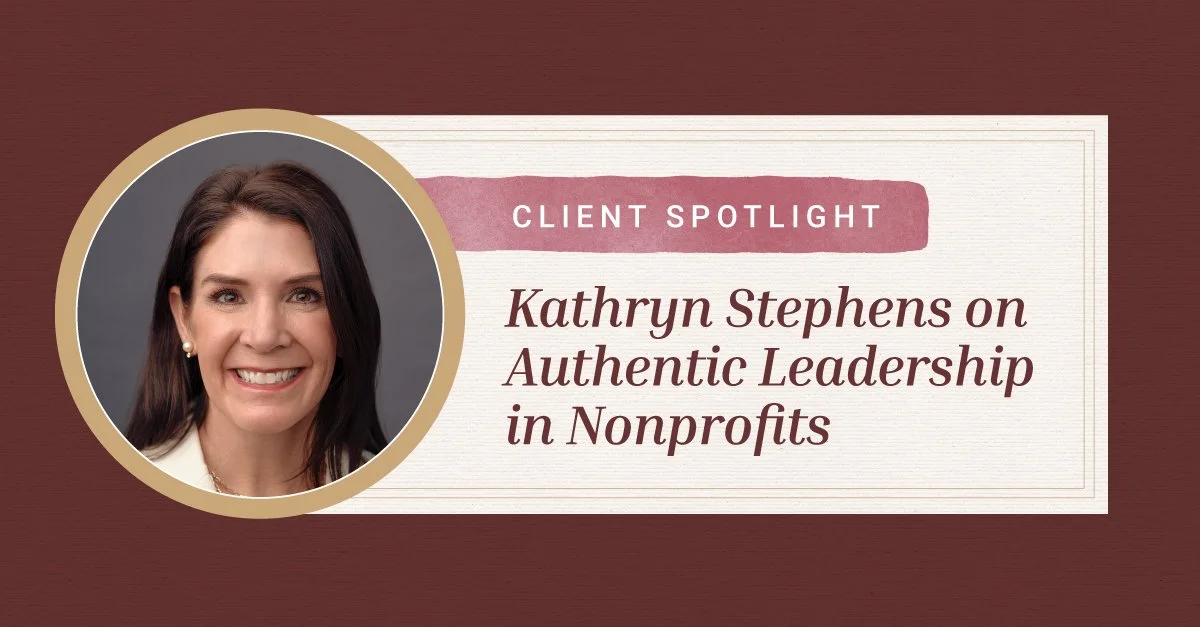Relationships Over Transactions: A Call to Strengthen Nonprofits from the Inside Out
By Kerri Mollard, Founder and CEO of Mollard Consulting
My connection to nonprofits and public spaces runs deep. My parents believed in social justice, so volunteering was a way of life growing up. Weekends meant parks and museums and summer vacations meant renting a cabin at Dillon State Park near Zanesville.
After studying art history, I earned a master’s degree in arts administration with a focus on museum management. Before founding our company in 2003, I worked in the arts, and our earliest clients were in the arts and culture sector.
Since then, my vision hasn’t changed: nonprofits are an indispensable part of American life. They are woven into our daily experience — libraries, food pantries and crisis centers — they are how society functions. What has changed are the threats they face. In 2025, federal and state decisions are dismantling key supports in real time. I never imagined we’d be here.
But even amid upheaval, one thing remains true: relationship-based strategies help organizations thrive — relationships between the organization and donors, the organization and partners, between the board and the chief executive and between board members themselves.
Connecting With Donors
Donors want connection. They want to know their gifts matter. They do not want to feel like ATMs.
I’ll never forget early in my career when a chairwoman of a volunteer auxiliary presented a large check after their signature fundraising event that she had poured her heart into. The executive director met her in the hallway and said, “Thanks, we were counting on this,” and walked away. That was it. No questions. No shared joy. Her face fell. All she wanted was a moment — a simple, sincere acknowledgment. It was a missed opportunity and a defining lesson in “connections over transactions.”
Don’t underestimate the power of storytelling at events. Donors connect to causes through stories. If messaging is only about statistics, you lose the heart. There’s an old saying: one death is a tragedy, 1,000 is a statistic. Don’t let your mission be reduced to numbers. Show us the one life changed.
We acknowledge that the looming threat of more government cuts creates instability that’s harmful for nonprofits and the private sector alike. But the solution isn’t flashy innovation. It’s going back to basics: relationships. The Q4 2024 AFP Fundraising Effectiveness Project data show fewer donors are giving, and even fewer are giving again. Retention must be a top priority. Renewing first-time donors and reengaging lapsed ones is essential.
Board Engagement
The most critical relationship in any nonprofit is between the board and the chief executive. The second is between board members themselves. When those relationships are healthy and collegial, incredible things can happen.
Nationally, boards are getting smaller (14 members is the new average) and they’re focusing more on strategy and problem solving, rather than just listening to reports. Since the pandemic, more organizations are realizing the old ways don’t work, where a few are engaged and others are there in name only.
We recently worked with a client struggling with power dynamics. Board members served without term limits, the executive committee met monthly and made decisions, and a small group of board members controlled committees. There was a culture of micromanagement because past issues with a former executive director eroded trust, and the current executive director was exhausted.
Through assessment, training and a facilitated retreat, all voices were brought into the process — even those not on the executive committee. The organization adopted real change. The executive director doubted it was possible, but it happened. Hearing the relief in their voice was rewarding for our team.
Change is possible, even in organizations with entrenched habits.
In the current political and cultural environment leaders must tap the full talent and wisdom of the board, not just a select few. Meetings will need to be strategic and generative to surface new ideas and creative funding solutions. Advocacy, too, will play a bigger role. BoardSource has an excellent tool for this called Stand for Your Mission.
Some ways for your organization to boost engagement include:
Rethinking the executive committee. It’s an outdated structure that can create a “board-within-a-board” dynamic and alienate the non-executive committee board members.
Honoring term limits. Rotating members brings fresh energy and new voices. Two three-year terms is the national standard.
Reworking how meetings are run. If agendas are packed with reports and one-way updates boards can’t get into strategic mode.
And don’t forget — there is power when board members are fully engaged, but also in partnerships. As Tanny Crane says, the key is a “stacking of hands.”
When public, private and nonprofit sectors align and invest together, the result is always greater than the sum of its parts. We love these projects for the synergy created and the impact achieved. The Franklin County Crisis Care Center is a powerful example of what happens when everyone stacks hands.
The Takeaway
The most resilient nonprofits are those willing to learn, evolve and adapt. They challenge old ways of thinking and elevate new voices. They have a growth mindset and measure real outcomes, not just activity. They invest in people and relationships and build a culture rooted in trust, candor and respect.
In times of uncertainty, the work of nonprofits becomes even more vital. I believe in the sector because I’ve seen what’s possible when people come together with shared purpose and values. Let’s stay rooted in relationships, focused on impact and committed to doing the hard, necessary work to build stronger communities.
Kerri Mollard is the founder and CEO of Mollard Consulting, a firm that partners with nonprofits to strengthen their organizations and deepen their impact.


